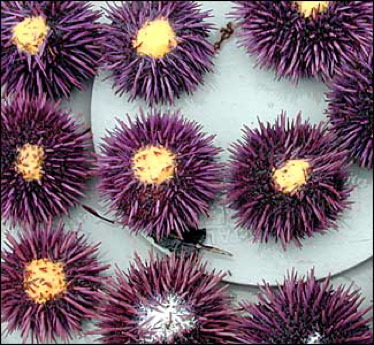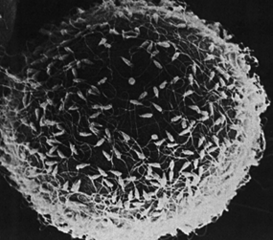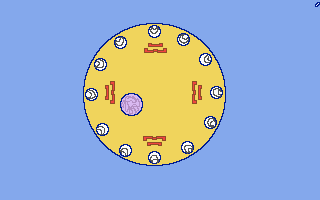
Sea urchin gametes can be shed
from adults by injecting 0.5 M KCl into the intracoelomic
cavity. large quantities of gametes can be released in this
manner, and the results gametes can then be used to produce
large numbers of fertilized eggs. The orange colored
gametes in this image are eggs; the white are sperm
(Pacific purple sea urchin, Strongylocentrotus
purpuratus).

Sea urchins have been a convenient system for studying fertilization and egg activation for a century. In fact, many of the key discoveries regarding species-specific sperm-egg binding and the signals that mediate the blocks to polypsermy and egg activation were made first in this system. The next few pages discuss some of the major events and mechanisms of fertilization in sea urchins.
Once an acrosome reacted sperm comes in contact with the egg, a series of events are initiated that culminate in the union of the genetic material. We can separate these steps into (1) species-specific sperm-egg binding, (2) the fast block to polyspermy, (3) the slow block to polyspermy, (4) sperm incorporation, and (5) pronuclear migration and fusion.

Animation courtesy of David Epel and
Chris Patton (Stanford University), from their Sea Urchin
Embryology web site. Description:
The sperm enters and binds to the egg surface. This induces
a calcium wave that causes the cortical granules, white, to
fuse with the plasma membrane, releasing their contents and
causing the fertilization membrane to rise. The sperm is
then pulled into the egg where it moves to the egg nucleus
and fuses. DNA synthesis occurs along with duplication of
the centrosome, black. Nuclear envelope breakdown and
chromosome condensation leads to the metaphase plate.
Anaphase leads to telophase and cell division.